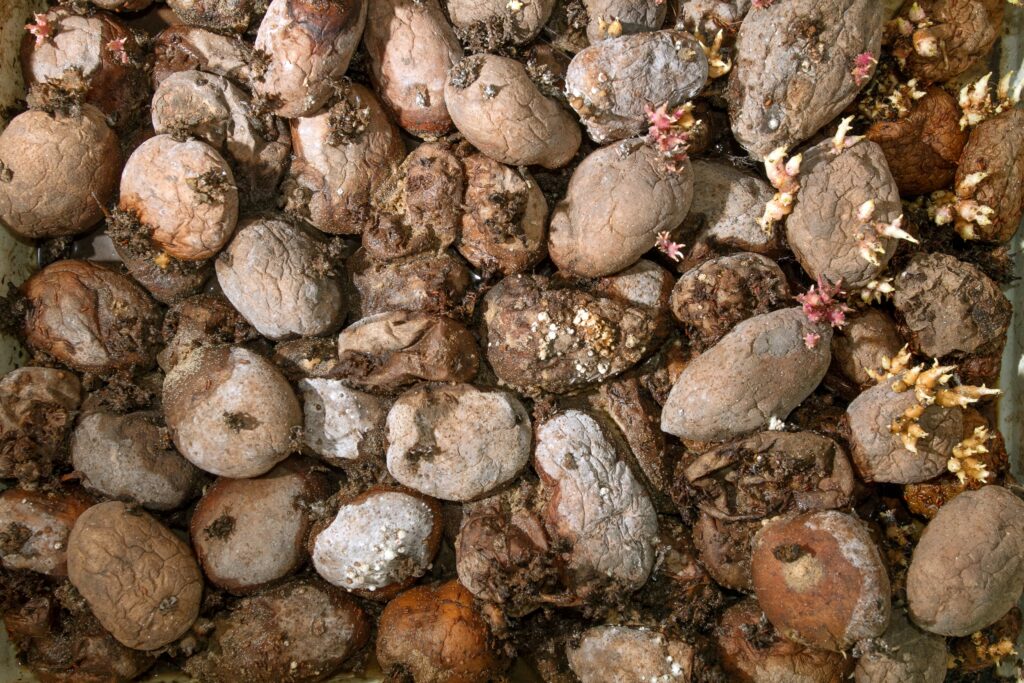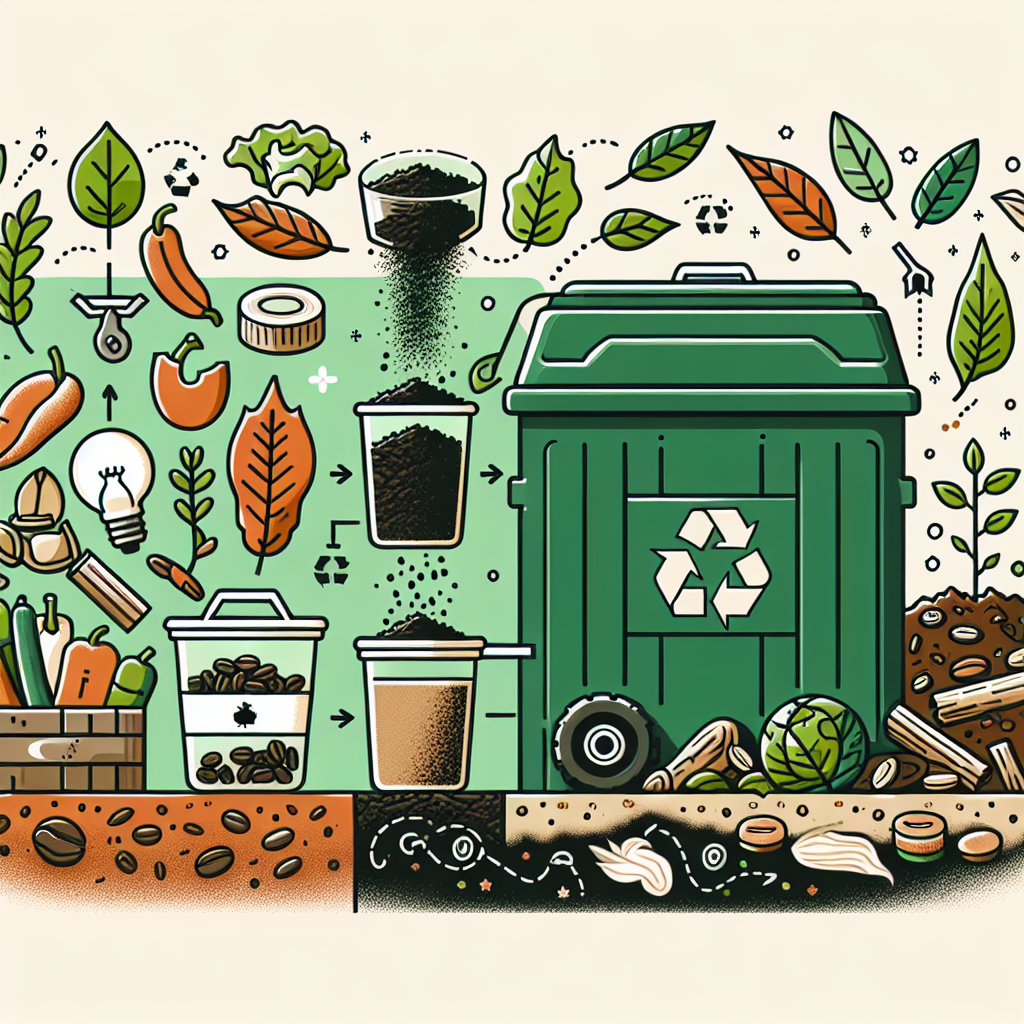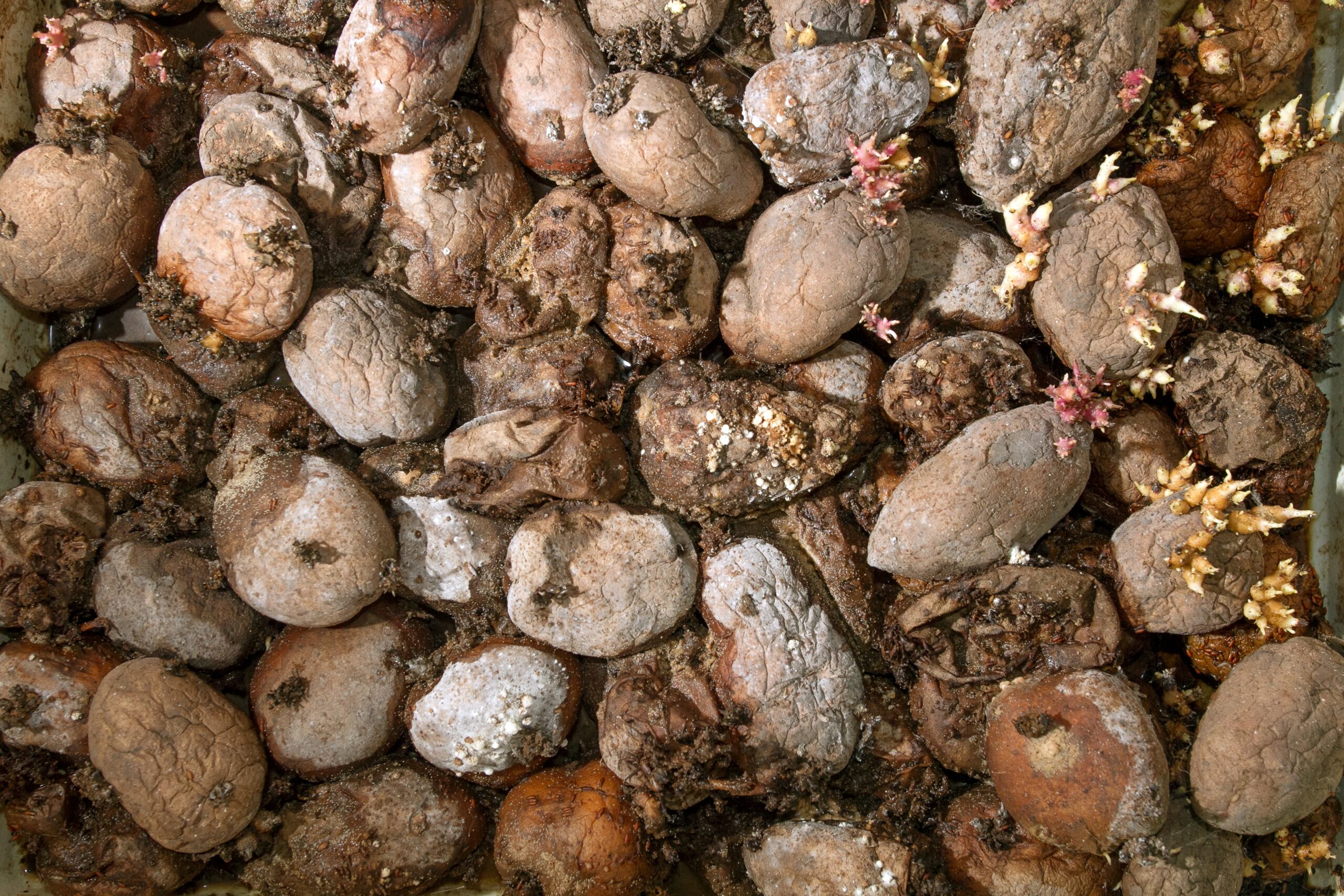Composting is the transformative process that turns organic waste into nutrient-rich soil. It involves a combination of decomposed organic materials such as food scraps, leaves, and grass clippings, which are broken down by microorganisms and fungi. This eco-friendly practice not only helps divert waste from landfills but also creates a valuable resource that can enhance soil quality and promote healthy plant growth. By harnessing the power of nature’s recycling system, composting offers you a simple and effective way to reduce your environmental footprint and contribute to a greener future.
What is composting?
Composting is a natural process that involves the decomposition of organic matter into a nutrient-rich soil amendment called compost. It is a method of recycling organic waste, such as food scraps, yard trimmings, and even certain paper products, to create a beneficial product that can be used to enhance soil health and promote plant growth.
Definition of Composting
Composting can be defined as the decomposition of organic matter through the action of microorganisms, such as bacteria and fungi. These microorganisms break down the organic materials into simpler compounds, releasing nutrients and transforming the waste into a dark, crumbly substance known as compost.
The process of creating compost
The process of creating compost involves providing the right conditions for microorganisms to thrive and break down the organic matter. These conditions include the right balance of carbon and nitrogen, moisture, and airflow. With the right mix of organic waste materials and proper management, the decomposition process can occur relatively quickly, resulting in rich, nutrient-dense compost.
Benefits and uses of compost
Compost offers numerous benefits for both the environment and gardeners. When added to soil, compost improves its structure, aeration, and water-holding capacity. It also enhances nutrient availability to plants, promoting healthy growth and reducing the need for synthetic fertilizers. Compost can be used in vegetable gardens, flower beds, and even for conditioning potting soils. Additionally, composting organic waste helps reduce the amount of waste sent to landfills, contributing to waste reduction and environmental sustainability.
Types of Composting
Backyard composting
Backyard composting is a popular and accessible method for composting. It involves using a designated area or container in your backyard to decompose organic waste. The materials used for backyard composting can include kitchen scraps, leaves, grass clippings, and other garden waste. Backyard composting allows you to turn your kitchen and garden waste into valuable compost that can be used in your own garden.
Indoor composting
Indoor composting is a suitable option for those who may not have access to outdoor space or have limited yard area. With indoor composting, you can compost your kitchen scraps and other organic waste inside your home. This method typically involves using a composting container specifically designed for indoor use. It allows you to conveniently manage your composting process and create nutrient-rich compost, even in small living spaces.
Vermicomposting
Vermicomposting is a specialized form of composting that involves using worms to aid in the decomposition process. Red worms, also known as red wigglers or Eisenia fetida, are commonly used for vermicomposting. These worms consume organic waste materials and produce castings, which are nutrient-rich worm excrement. Vermicomposting can be done both indoors and outdoors, making it a versatile option for composting enthusiasts.

This image is property of images.unsplash.com.
Backyard Composting
Materials for backyard composting
To start a backyard compost pile, you will need a mixture of “green” and “brown” materials. “Green” materials include nitrogen-rich items such as kitchen scraps (fruits, vegetables, coffee grounds), fresh grass clippings, and green plant trimmings. “Brown” materials include carbon-rich items such as dried leaves, twigs, straw, and shredded newspaper. A balance of these materials is crucial to maintaining a healthy compost pile.
Building a compost pile
To build a compost pile, start by selecting a suitable location in your backyard. It should be easily accessible and receive adequate sunlight. Begin by layering your green and brown materials in a 3:1 ratio, alternating between the two types. Ensure adequate moisture by lightly watering each layer. Repeat this layering process until the pile reaches a height of around three to five feet.
Maintaining a compost pile
To maintain a compost pile, it is essential to monitor and manage its conditions. Keep the pile moist but not overly saturated. Regularly turn the pile to introduce oxygen, which helps facilitate decomposition. Mixing the outer materials from the edges of the pile towards the center will ensure even decomposition. Maintain the proper carbon-to-nitrogen ratio by adding fresh materials as needed.
Harvesting and using compost
After several months to a year, depending on the conditions and the materials used, your compost will mature and be ready for use. It should be dark, crumbly, and have an earthy smell. To harvest the compost, remove any undecomposed materials or larger chunks. The remaining compost can be used as a top dressing for your garden beds, blended into potting mixes, or as a nutrient-rich addition when planting new trees, shrubs, or flowers.
Indoor Composting
A suitable option for small spaces
Indoor composting provides an excellent solution for individuals with limited outdoor space or those living in apartments or urban areas. It allows you to recycle your kitchen scraps and other organic waste without the need for a backyard compost pile. With indoor composting, you can minimize your environmental footprint and still reap the benefits of composting, even in a small living space.
Materials for indoor composting
Similar to backyard composting, indoor composting requires a balance of green and brown materials. Collect kitchen scraps such as fruit and vegetable peels, coffee grounds, and tea leaves for your green materials. Brown materials can include shredded newspaper, cardboard, or dry leaves. It is important to avoid adding any meat, dairy, or oily foods to your indoor compost bin to prevent unpleasant odors and attract pests.
Container options
When setting up your indoor composting system, you will need a suitable container. There are various options available, ranging from small compost bins specifically designed for indoor use to DIY setups using plastic bins or buckets. The container should have a lid to contain odors and prevent pests from entering. Make sure the container has drainage holes or a tray to collect excess moisture.
Maintaining an indoor composting system
Proper maintenance of your indoor composting system is crucial to avoid odor, pests, and other issues. Keep the compost bin in a cool, well-ventilated area, away from direct sunlight. Ensure that the compost remains moist but not soaking wet, as excessive moisture can lead to foul odors. Regularly stir or mix the contents to promote decomposition and discourage any fruit flies or other pests.

This image is property of images.unsplash.com.
Vermicomposting
What is vermicomposting?
Vermicomposting is the process of using worms to assist in the decomposition of organic waste. The worms consume the organic matter, breaking it down through their digestive system, and excrete nutrient-rich castings. Vermicomposting is an efficient way to produce high-quality compost while harnessing the natural abilities of these hardworking worms.
Using worms to decompose organic waste
Red worms, such as red wigglers, play a crucial role in vermicomposting. These worms thrive in organic waste and have a voracious appetite for kitchen scraps and other decaying materials. As they consume the organic waste, they excrete castings that are rich in beneficial microorganisms, enzymes, and plant nutrients, making them an ideal addition to soil or potting mixes.
Setting up a vermicomposting bin
To start vermicomposting, you will need a container or bin that provides the right environment for the worms. The bin should be shallow, opaque, and have drainage holes to prevent excess moisture buildup. Fill the bin with a bedding material, such as shredded newspaper or cardboard, to create a comfortable living space for the worms. Add the worms to the bin along with a layer of organic waste, and place a lid on top to keep the worms contained.
Maintaining a vermicomposting bin
Proper maintenance of a vermicomposting bin involves keeping the worms happy and healthy. Keep the bedding moist but not waterlogged, as too much moisture can lead to an anaerobic environment. Avoid adding any citrus fruits, onions, or high-fat foods, as they may be harmful to the worms. Regularly add kitchen scraps and other organic waste, ensuring a balance between green and brown materials. Harvest the worm castings periodically by separating them from the remaining organic matter.
Benefits of Composting
Environmental benefits
Composting offers several environmental benefits. By diverting organic waste from landfills, it reduces the release of methane, a potent greenhouse gas that contributes to climate change. Composting also helps to minimize the need for chemical fertilizers and pesticides, reducing pollution in soil, water, and air. By creating nutrient-rich compost, the carbon and nutrients from organic waste are returned to the soil, supporting a healthy ecosystem.
Reduction of waste sent to landfills
Composting provides a sustainable solution to reduce the amount of waste sent to landfills. Organic waste makes up a significant portion of household and commercial waste, and when it decomposes in landfills, it produces methane gas, which contributes to global warming. By composting organic waste, you can significantly reduce the amount of waste that ends up in landfills, minimizing the environmental impact.
Improvement of soil quality
Compost is a valuable soil amendment that improves soil quality. It enhances the physical structure of the soil, making it easier for plant roots to penetrate and access nutrients and water. Compost also increases soil fertility by providing essential nutrients and promoting beneficial microbial activity. When added to sandy soils, compost improves their ability to retain moisture, while in clay soils, it enhances drainage and aeration.
Conservation of resources
Composting plays a vital role in resource conservation. By recycling organic waste, composting reduces the need for synthetic fertilizers and promotes a more sustainable approach to agriculture and gardening. Compost enriches the soil, reducing the dependency on chemical fertilizers that can have negative impacts on the environment. Additionally, composting helps conserve water by improving soil moisture retention and reducing runoff.

This image is property of images.unsplash.com.
How Composting Works
Factors that influence the composting process
Several factors influence the composting process, including the carbon-to-nitrogen ratio, moisture, and airflow. It is important to maintain the right balance of these factors to ensure effective decomposition. The carbon-to-nitrogen ratio, also known as the C/N ratio, determines the rate at which organic matter breaks down. The ideal ratio is approximately 25-30 parts carbon to 1 part nitrogen.
Carbon-to-nitrogen ratio
The carbon-to-nitrogen ratio is important because it affects the activity of microorganisms. Carbon-rich materials, such as dried leaves or wood chips, provide the energy source for microorganisms, while nitrogen-rich materials, like kitchen scraps or fresh grass clippings, provide the proteins necessary for their growth and reproduction. Balancing these materials helps maintain the optimal conditions for decomposition.
Moisture
Moisture is critical for the composting process, as it supports microbial activity and decomposition. The compost pile should be moist but not saturated. If the pile is too dry, decomposition will slow down, and if it is too wet, anaerobic conditions may develop, leading to unpleasant odors. Regularly monitor the moisture levels and adjust accordingly by adding water or dry materials to maintain a suitable balance.
Airflow
Proper airflow is essential to ensure aerobic conditions and facilitate the composting process. Oxygen is required for the growth and activity of aerobic microorganisms responsible for decomposition. Turning the compost pile regularly introduces fresh oxygen and helps mix the materials, ensuring even decomposition. Adequate airflow can be maintained by periodically aerating the pile using a pitchfork or similar tool.
Composting Dos and Don’ts
Dos: Choosing the right materials
When composting, choose materials that are suitable for decomposition. Opt for a mix of green and brown materials to maintain the carbon-to-nitrogen ratio. Green materials can include fruit and vegetable scraps, coffee grounds, and fresh grass clippings. Brown materials may consist of dried leaves, twigs, shredded newspaper, or straw. By selecting the right materials, you can ensure a healthy composting process.
Dos: Maintaining the proper conditions
To achieve successful composting, it is essential to maintain the proper conditions. Regularly monitor the moisture of the compost pile and adjust as needed to ensure adequate levels. Turn the pile to introduce oxygen and promote even decomposition. Keep a balance between carbon-rich and nitrogen-rich materials to maintain the ideal carbon-to-nitrogen ratio. By maintaining these conditions, you can facilitate the decomposition process effectively.
Don’ts: What not to compost
While many organic materials can be composted, it is important to avoid certain items that can disrupt the composting process or attract pests. Do not compost meat, dairy products, or oily foods, as they can produce odors and attract unwanted animals. It is also best to avoid composting diseased plants, weeds with mature seeds, or invasive plants, as they can potentially survive the composting process and reintroduce themselves to your garden.
Don’ts: Avoiding common mistakes
To ensure successful composting, it is important to avoid common mistakes. Do not add too many grass clippings at once, as they can become compacted and prevent airflow. Avoid overwhelming the compost pile with excessive amounts of one type of material, as this can lead to imbalances in the composting process. Additionally, do not neglect the moisture levels, as both excessive dryness and excessive wetness can hinder decomposition.

Common Composting Problems and Solutions
Foul odor
If your compost pile starts to emit a foul odor, it may be an indication of improper conditions. Foul odors can occur due to excessive moisture, inadequate airflow, or the presence of materials that should not be composted. To remedy this, ensure proper aeration by turning the pile regularly and adding dry materials, such as dried leaves or straw, to absorb excess moisture. Avoid adding meat, dairy, or oily foods to prevent unpleasant smells.
Pests and rodents
Unwanted pests and rodents can be attracted to compost piles, especially if improper materials are added or the pile is not properly managed. To deter pests, avoid adding food scraps that attract animals, such as meat or dairy. Ensure the compost pile is secure and cannot be easily accessed by rodents. Avoid adding any materials that are known to attract pests, such as pet waste or diseased plant material.
Slow decomposition
If your compost pile is not decomposing as quickly as desired, it may be due to imbalanced conditions or inadequate mixing. Check the carbon-to-nitrogen ratio of the pile and adjust by adding more green or brown materials as needed. Ensure proper moisture levels by sprinkling water if necessary. Regularly turn the pile to introduce oxygen and mix the materials, ensuring even decomposition. If the pile is too small, consider adding more materials to promote faster decomposition.
Too much moisture
Excessive moisture in a compost pile can lead to anaerobic conditions and unpleasant odors. If your compost pile is too wet, add dry materials such as dried leaves, straw, or shredded newspaper to absorb the excess moisture. Avoid overwatering, and cover the pile during rainy periods to prevent additional moisture accumulation. By maintaining the appropriate moisture levels, you can create a healthy environment for decomposition.
In conclusion, composting is a natural and environmentally friendly way to recycle organic waste and create a valuable resource for plants and gardens. Whether through backyard composting, indoor composting, or vermicomposting, the benefits of composting are significant. By understanding the process, choosing the right materials, and maintaining proper conditions, you can enjoy the rewards of composting while contributing to a more sustainable future. Happy composting!
